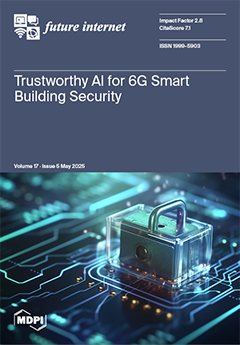Smart cities are urban areas that use contemporary technology to improve citizens’ overall quality of life. These modern digital civil hubs aim to manage environmental conditions, traffic flow, and infrastructure through interconnected and data-driven decision-making systems. Today, many applications employ intelligent sensors for
[...] Read more.
Smart cities are urban areas that use contemporary technology to improve citizens’ overall quality of life. These modern digital civil hubs aim to manage environmental conditions, traffic flow, and infrastructure through interconnected and data-driven decision-making systems. Today, many applications employ intelligent sensors for real-time data acquisition, leveraging visualization to derive actionable insights. However, despite the proliferation of such platforms, challenges like high data volume, noise, and incompleteness continue to hinder practical visual analysis. As missing data is a frequent issue in visualizing those urban sensing systems, our approach prioritizes their correction as a fundamental step. We deploy a hybrid imputation strategy combining SARIMAX,
k-nearest neighbors, and random forest regression to address this. Building on this foundation, we propose an interactive web-based pipeline that processes, analyzes, and presents the sensor data provided by Basel’s “
Smarte Strasse”. Our platform receives and projects environmental measurements, i.e., NO
2, O
3, PM
2.5, and traffic noise, as well as mobility indicators such as vehicle speed and type, parking occupancy, and electric vehicle charging behavior. By resolving gaps in the data, we provide a solid foundation for high-fidelity and quality visual analytics. Built on the Flask web framework, the platform incorporates performance optimizations through Flask-Caching. Concerning the user’s dashboard, it supports interactive exploration via dynamic charts and spatial maps. This way, we demonstrate how future internet technologies permit the accessibility of complex urban sensor data for research, planning, and public engagement. Lastly, our open-source web-based application keeps reproducible, privacy-aware urban analytics.
Full article





